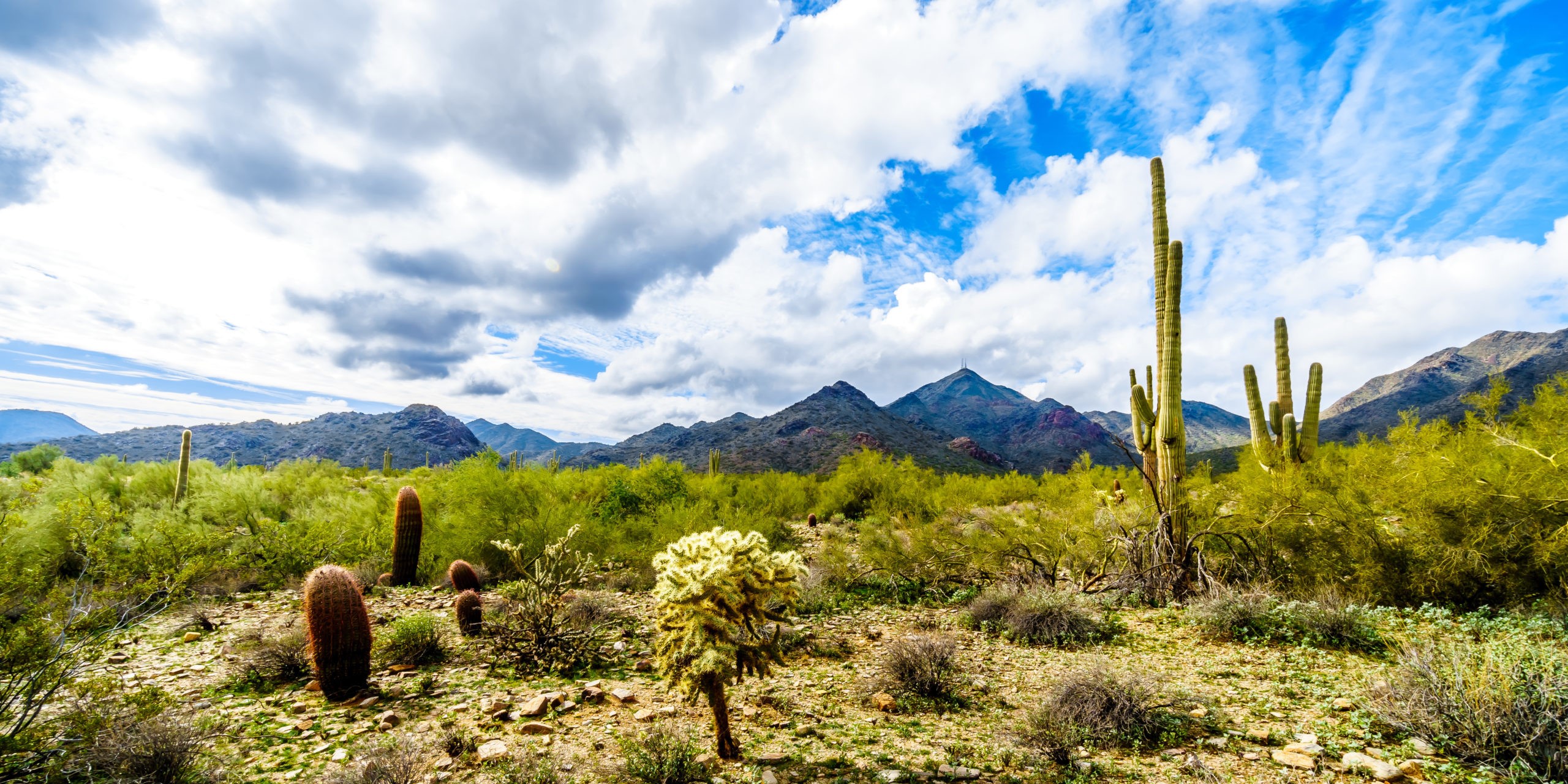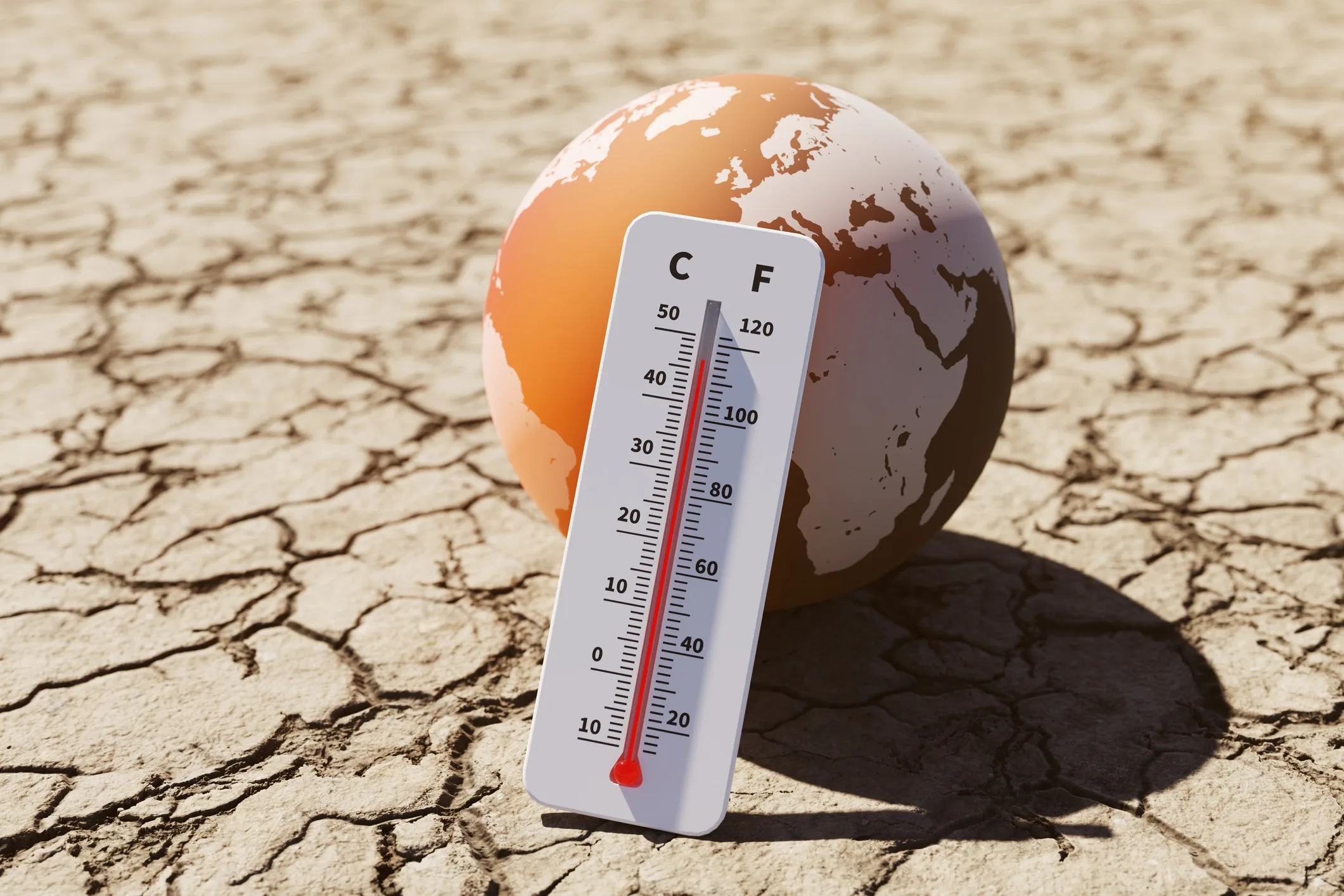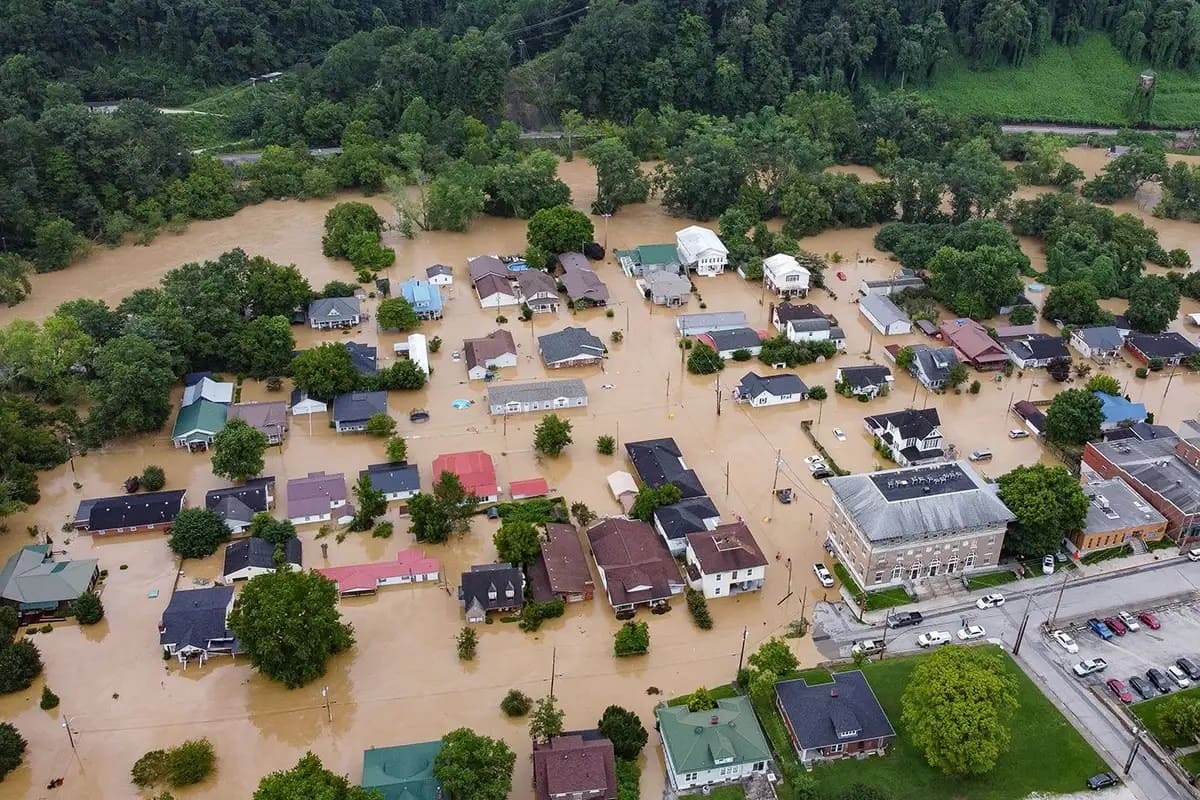Home>Weather and Climate>Environments With The Highest Average Temperatures


Weather and Climate
Environments With The Highest Average Temperatures
Published: March 3, 2024
Discover the hottest environments around the world and learn about their extreme average temperatures. Explore the impact of weather and climate on these scorching locations.
(Many of the links in this article redirect to a specific reviewed product. Your purchase of these products through affiliate links helps to generate commission for Temperatures.com, at no extra cost. Learn more)
Table of Contents
Introduction
When it comes to weather and climate, temperature plays a pivotal role in shaping the characteristics of different environments around the world. From scorching deserts to humid rainforests, the average temperature of a location significantly influences its flora, fauna, and overall ecosystem. Understanding the environments with the highest average temperatures provides valuable insights into the diverse and often extreme conditions that exist on our planet.
Exploring these environments not only unveils the remarkable adaptability of life forms but also sheds light on the complex interplay between geography, climate, and biodiversity. In this article, we will delve into several environments known for their exceptionally high average temperatures, each offering a unique perspective on the impact of heat on the natural world.
Let's embark on a journey to discover the hottest places on Earth and gain a deeper appreciation for the remarkable adaptations that enable life to thrive in these challenging conditions.
Read more: Portland’s Highest Recorded Temperature
Deserts
Deserts are renowned for their scorching temperatures, often reaching extreme highs that make them some of the hottest environments on Earth. These arid regions, characterized by minimal precipitation and vast expanses of sand dunes or rocky terrain, experience intense solar radiation, contributing to their soaring average temperatures.
The Sahara Desert, located in North Africa, is one of the most well-known deserts and holds the record for the highest temperature ever recorded on the planet. The vast expanse of sand and rock in the Sahara absorbs and retains heat, leading to daytime temperatures that can exceed 120°F (49°C). The lack of vegetation and moisture further exacerbates the heat, creating an environment where only the most resilient species can survive.
Similarly, the Arabian Desert, encompassing parts of Saudi Arabia, Yemen, and Oman, experiences scorching temperatures, with summer averages surpassing 100°F (38°C). The combination of high temperatures and low humidity levels creates a harsh and unforgiving landscape, where only specially adapted flora and fauna can thrive.
In the United States, the Sonoran Desert in Arizona and California is known for its extreme heat, with summer temperatures often exceeding 110°F (43°C). The iconic saguaro cactus and other desert-adapted plants have evolved remarkable strategies to endure the relentless sun and heat, showcasing nature's resilience in the face of adversity.
Desert ecosystems have evolved unique adaptations to cope with the blistering heat. From the ability of certain plants to store water for extended periods to the nocturnal behavior of many desert animals, these adaptations are essential for survival in such challenging conditions. Additionally, the heat of deserts has a profound impact on the geological formations, contributing to the sculpting of iconic features like sandstone arches and mesas.
Despite the harshness of desert environments, they possess a stark and awe-inspiring beauty, with vast expanses of undulating dunes and rugged landscapes that captivate the imagination. The extreme temperatures of deserts not only shape the physical characteristics of these regions but also influence the cultural practices and lifestyles of indigenous desert-dwelling communities.
Deserts stand as a testament to the resilience of life in the face of adversity, showcasing the remarkable ability of organisms to adapt to some of the harshest conditions on Earth. As we continue to explore the environments with the highest average temperatures, we gain a deeper appreciation for the diverse and awe-inspiring landscapes that exist across our planet.
Tropical Rainforests
Tropical rainforests, known for their lush vegetation and high humidity, are renowned for their consistently warm and humid conditions. These vibrant ecosystems, found near the equator in regions such as the Amazon Basin in South America, the Congo Basin in Africa, and the islands of Southeast Asia, experience some of the highest average temperatures on the planet.
The Amazon Rainforest, often referred to as the "lungs of the Earth," is a prime example of a tropical rainforest with soaring temperatures. With average temperatures ranging from 77°F to 88°F (25°C to 31°C) throughout the year, coupled with high levels of humidity, the Amazon provides an ideal environment for an astounding array of plant and animal species. The dense canopy of trees not only contributes to the humidity but also provides shade, creating a microclimate that supports the diverse flora and fauna within.
Similarly, the Congo Rainforest in Central Africa experiences consistently high temperatures, with average highs reaching 86°F (30°C) or more. The combination of abundant rainfall and warmth fosters unparalleled biodiversity, with countless species of plants, insects, birds, and mammals thriving in this rich and complex ecosystem.
Tropical rainforests are characterized by their remarkable biodiversity, with an astonishing variety of plant and animal species coexisting within a relatively small area. The warm temperatures and consistent rainfall create an environment where life flourishes, leading to the evolution of unique adaptations and symbiotic relationships among the diverse inhabitants.
The heat and humidity of tropical rainforests also contribute to the rapid cycling of nutrients, as decomposition and organic matter breakdown occur at an accelerated pace. This nutrient-rich environment supports the towering trees, epiphytes, and myriad plant species that form the intricate layers of the rainforest canopy.
Moreover, the high temperatures and abundant moisture provide the ideal conditions for the proliferation of vibrant flora, including orchids, bromeliads, and towering hardwood trees. The dense foliage and interconnected ecosystem of tropical rainforests create a visually stunning and biologically diverse environment that captivates the imagination and inspires awe.
As we delve into the world of tropical rainforests, we uncover the intricate web of life that thrives in these hot and humid environments. The heat, combined with the year-round rainfall, fosters a level of biodiversity and ecological complexity that is unparalleled, making tropical rainforests one of the most vital and captivating environments on Earth.
Urban Heat Islands
Urban heat islands (UHIs) represent a fascinating phenomenon wherein metropolitan areas experience significantly higher temperatures than their surrounding rural areas. This heat disparity is primarily attributed to human activities, infrastructure, and the modification of land surfaces within urban environments. As a result, urban heat islands have become a prominent feature of modern cities, exerting diverse impacts on the local climate, energy consumption, and public health.
The development of urban heat islands is intricately linked to the abundance of heat-absorbing materials, such as concrete, asphalt, and glass, which dominate the urban landscape. These surfaces have a higher capacity to absorb and retain heat compared to natural landscapes, leading to elevated temperatures within urban areas. Additionally, the concentration of buildings and infrastructure impedes natural ventilation and disrupts the balance of heat exchange, further exacerbating the heat island effect.
The consequences of urban heat islands extend beyond mere temperature differences, influencing various aspects of urban life. For instance, higher temperatures in urban areas can elevate energy demands for air conditioning and cooling systems, contributing to increased energy consumption and associated greenhouse gas emissions. Moreover, the amplified heat can pose health risks, particularly during heatwaves, as vulnerable populations are more susceptible to heat-related illnesses.
Efforts to mitigate the impact of urban heat islands have spurred innovative solutions aimed at enhancing urban resilience and sustainability. Urban planners and architects are incorporating green infrastructure, such as green roofs, urban parks, and permeable surfaces, to counteract the heat island effect and promote natural cooling processes. These green initiatives not only mitigate heat accumulation but also enhance the aesthetic appeal of urban spaces and improve air quality.
Furthermore, the implementation of cool roofing materials and reflective surfaces has shown promise in reducing surface temperatures and mitigating the urban heat island effect. By minimizing heat absorption and enhancing thermal reflectance, these strategies contribute to a more balanced urban microclimate, fostering a more comfortable and sustainable urban environment.
As cities continue to expand and grapple with the challenges of climate change, addressing urban heat islands has emerged as a critical priority. Through the integration of innovative urban design, sustainable infrastructure, and community engagement, cities can strive to mitigate the impact of urban heat islands, fostering more resilient and livable urban environments for current and future generations.
The phenomenon of urban heat islands serves as a compelling reminder of the intricate relationship between human activities and the natural environment, highlighting the need for sustainable urban development and climate-conscious design practices. By addressing the challenges posed by urban heat islands, cities can pave the way for a more sustainable and harmonious coexistence between urbanization and the natural world.
Geothermal Hotspots
Geothermal hotspots represent unique and captivating environments characterized by the presence of intense heat emanating from the Earth's interior. These extraordinary locations, often found in regions with tectonic activity and volcanic landscapes, showcase the remarkable power and energy that lie beneath the Earth's surface. From steaming geysers to bubbling hot springs, geothermal hotspots offer a glimpse into the dynamic forces shaping our planet.
One of the most renowned geothermal hotspots is the geysers of Yellowstone National Park in the United States. This geologically active area is home to a mesmerizing display of geysers, including the iconic Old Faithful, which erupts with remarkable regularity, sending scalding water and steam high into the air. The geothermal features of Yellowstone serve as a testament to the geological forces at play, with the intense heat fueling the spectacular displays that captivate visitors from around the world.
In Iceland, the geothermal hotspot of the Reykjanes Peninsula showcases the intersection of geothermal energy and human innovation. The region is dotted with geothermal power plants harnessing the Earth's heat to generate electricity and provide heating for nearby communities. The sight of billowing steam rising from the earth's surface, coupled with the hum of turbines converting geothermal energy into power, underscores the ingenuity and resourcefulness of utilizing geothermal resources for sustainable energy production.
Moreover, the geothermal wonders of Rotorua in New Zealand offer a striking blend of natural beauty and cultural significance. The region is renowned for its vibrant geothermal features, including colorful hot springs, bubbling mud pools, and the iconic Pohutu Geyser. These geothermal marvels are deeply intertwined with the indigenous Maori culture, serving as sacred sites and sources of traditional healing and wellness practices. The geothermal landscapes of Rotorua exemplify the profound connection between geothermal phenomena and cultural heritage, offering a rich tapestry of natural and human history.
Geothermal hotspots not only showcase the raw power of the Earth's geothermal energy but also provide valuable insights into sustainable energy solutions and geothermal resource utilization. The harnessing of geothermal energy for electricity generation, heating, and spa facilities underscores the diverse applications and benefits of this renewable energy source.
As we explore the geothermal hotspots around the world, we gain a deeper appreciation for the dynamic and transformative forces that shape our planet. These captivating environments serve as a reminder of the Earth's boundless energy potential and the harmonious coexistence of natural wonders and human innovation.
Conclusion
The exploration of environments with the highest average temperatures has unveiled a tapestry of diverse and awe-inspiring landscapes, each shaped by the relentless influence of heat and the remarkable adaptations of life forms. From the scorching deserts to the lush tropical rainforests, and from the urban heat islands to the geothermal hotspots, these environments offer profound insights into the intricate relationship between temperature, geography, and biodiversity.
Deserts, with their soaring temperatures and minimal precipitation, stand as testaments to the resilience of life in the face of adversity. The Sahara Desert, the Arabian Desert, and the Sonoran Desert exemplify the harsh yet captivating beauty of arid landscapes, where specialized flora and fauna have evolved to thrive in the blistering heat. These environments not only shape the physical characteristics of the regions but also influence the cultural practices and lifestyles of indigenous desert-dwelling communities.
Tropical rainforests, characterized by their consistently warm and humid conditions, harbor unparalleled biodiversity and ecological complexity. The Amazon Rainforest and the Congo Rainforest serve as vibrant showcases of life's adaptability, where the high temperatures and abundant rainfall create an environment where an astonishing variety of plant and animal species coexist. The dense foliage and interconnected ecosystem of tropical rainforests create a visually stunning and biologically diverse environment that captivates the imagination and inspires awe.
Urban heat islands, a product of human activities and urbanization, underscore the impact of human influence on local climates. The disparities in temperature between urban and rural areas highlight the need for sustainable urban development and climate-conscious design practices. Efforts to mitigate the impact of urban heat islands through green infrastructure and innovative urban design exemplify the potential for creating more resilient and livable urban environments.
Geothermal hotspots, with their steaming geysers and bubbling hot springs, offer a glimpse into the dynamic forces shaping our planet. These captivating environments not only showcase the raw power of the Earth's geothermal energy but also provide valuable insights into sustainable energy solutions and geothermal resource utilization. The harnessing of geothermal energy for electricity generation and heating underscores the diverse applications and benefits of this renewable energy source.
As we conclude our journey through these environments, we are reminded of the intricate interplay between temperature, geography, and life. The environments with the highest average temperatures not only showcase the resilience and adaptability of life forms but also underscore the need for sustainable practices and a harmonious coexistence with the natural world. By gaining a deeper appreciation for these diverse and captivating landscapes, we are inspired to embrace the beauty and complexity of our planet's ecosystems while striving to preserve and protect them for future generations.














